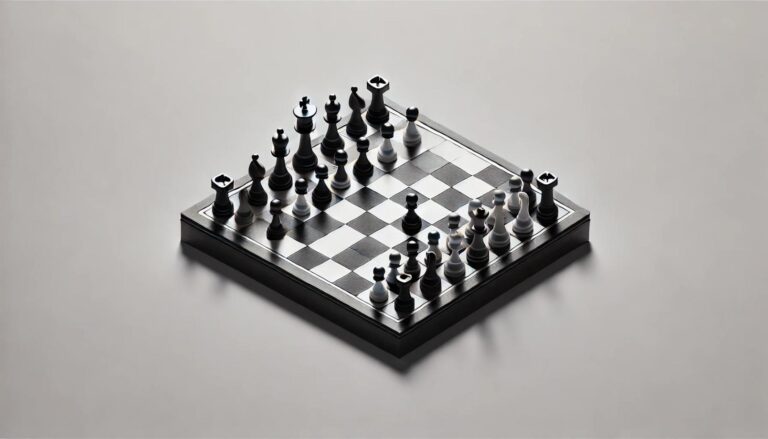Introduction
Chess is an ancient and universal game that has been enjoyed by people all around the world for centuries. It requires strategy, foresight, and critical thinking skills, making it a favorite among intellectuals and competitive players alike. If you´re interested in learning how to play chess, then this step-by-step guide is for you. By the end of this tutorial, you´ll have a solid understanding of the rules, basic tactics, and tips to help you improve your game.
Basics of Chess
Before we dive into the mechanics of the game, it´s important to understand the basics of chess. Here are a few key terms and concepts that you´ll encounter while playing:
- Board: The game is played on a checkered board with 64 squares, alternating between light and dark colors. It´s divided into 8 rows and 8 columns, with each player starting on opposite sides.
- Pieces: There are 6 different types of chess pieces: the king, queen, rook, bishop, knight, and pawn. Each piece has its own unique moves and functions.
- Checkmate: This is the ultimate goal of the game – to put the opponent´s king in a position where it cannot escape capture. When a player´s king is in checkmate, they lose the game.
- Stalemate: This is a situation where neither player can make a legal move, but the king is not in check. In this case, the game ends in a tie.
Setup and Pieces
Now that you understand the basics, it´s time to learn about the setup and movements of each piece. Here´s a quick rundown of the starting positions and movements:
- King: The king is the most important piece in the game. It can only move one square in any direction – up, down, left, right, or diagonally. The king cannot move to a square that is under attack by the opponent´s pieces.
- Queen: This is the most powerful piece on the board. The queen can move in any direction – horizontally, vertically, or diagonally – by any number of squares.
- Rook: The rook can move horizontally or vertically by any number of squares. It´s considered a strong attacking piece and is often used to control important files and ranks on the board.
- Bishop: The bishop can move diagonally by any number of squares. Each player starts with two bishops – one on a light-colored square and one on a dark-colored square.
- Knight: The knight is the only piece that can jump over other pieces. It moves in an L-shaped pattern – two squares in one direction and one square perpendicular to it.
- Pawn: This is the most numerous piece on the board, with eight pawns for each player. Pawns can only move forward, but they can capture an opponent´s piece by moving one square diagonally. On its initial move, a pawn can also choose to move two squares forward.
Objective and Rules of the Game
The objective of chess is to checkmate your opponent´s king, as mentioned earlier. But in order to do so, you need to have a good understanding of the rules of the game. Here are some important rules to keep in mind:
- Each player takes turns making a move – white moves first, followed by black, and so on.
- Players cannot skip turns or pass – they must make a legal move with one of their pieces.
- Players can only move one piece at a time, unless they are castling (more on this later).
- Pieces cannot move through each other – they can only capture an opponent´s piece by landing on its square.
- If a player´s king is attacked by an opponent´s piece, they must get out of check. This can be done by either moving the king out of harm´s way, capturing the attacking piece, or blocking the attack with another piece.
- If the king cannot get out of check, then it is in checkmate and the game is over.
Special Moves and Strategies
Now that you understand the basic rules and mechanics, let´s explore some special moves and strategies that will help you become a better chess player:
- Castling: This is a special move where the king and rook can switch places. It´s a good way to protect the king and develop the rook to a more active position.
- En Passant: This is a rule that allows a pawn to capture an opponent´s pawn that has moved two squares on its initial move. It can only be done immediately after the opponent´s pawn has moved.
- Pawn Promotion: If a pawn reaches the opposite end of the board, it can be promoted to a queen, rook, bishop, or knight, depending on the player´s choice.
- Develop Your Pieces: In order to control the board and put pressure on your opponent, it´s important to develop your pieces as early as possible.
- Think Ahead: Chess is a game of strategy and foresight. It´s important to not just focus on your current move, but also think about your next few moves and anticipate your opponent´s possible responses.
Conclusion
Congratulations! You´ve now learned the basics of how to play chess for beginners. Remember, the best way to improve at chess is to practice regularly and study the game. Don´t get discouraged if you lose – even the best chess players in the world have lost games. Keep playing, keep learning, and most importantly, have fun!

